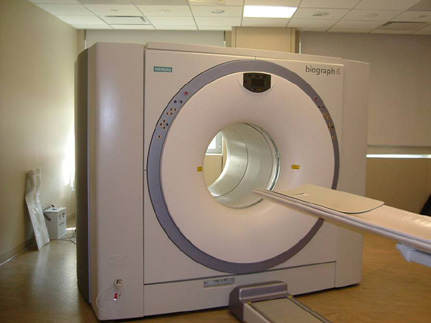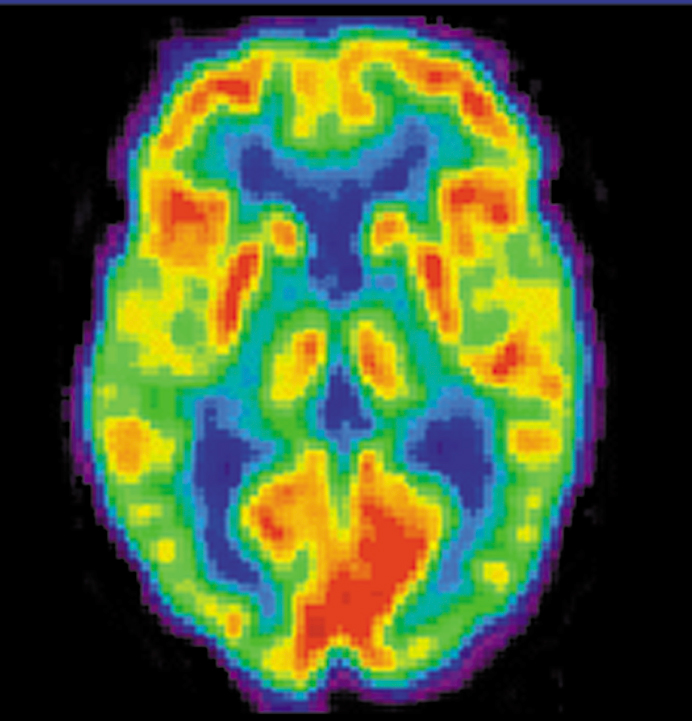Positron emission tomography
From Psy3241
What is a Positron Emission Tomography
Positron Emission Tomography is also known as a PET scan. A PET scan employs radioactive isotopes which function as transmitters from inside the human or animal body. The radioactivity is received by a complex series of magnets that convert the electromagnetic information into an image which can then be analyzed by a scientist or doctor.
The machine looks like a large round tube with a back board that can slide in and out. The patient lays flat on the board and the machine is started which results in the board moving into the tube. Large magnets and Gamma Ray detectors compile an image using a computer of the radioactivity that is being produced by the radioactive isotopes that were injected into the patient.

Radioactivity
Radioactive isotopes that are used for Nuclear Medicine Imaging are generally low-energy, short lived, and relatively harmless chemical compounds. These isotopes have such a short half-life (half of the isotope has decayed) that they must be produced in the same location of the PET scanner. The machine that produces the isotopes is called a Cyclotron. Commonly used radioactive isotopes are Carbon-11, Nitrogen-13, and Oxygen-15 with half-lives of 20, 10 and 2 minutes respectively. These isotopes are generally mixed with a simple sugar such as Glucose for injection.
How a PET scan works
PET scanners work on the assumption that areas of high radioactivity are associated with high levels of brain activity. In other words, the more radioactivity being produced by an area, the more the brain is relying on blood to power that specific area of the brain. PET scanners can provide a 2D or 3D image of the brain due to the random emission of Gamma Rays in all direction inside the PET tube. Detectors can identify varying levels of radiation and produce an accurate image of brain activity. There is a risk of radiation poisoning to the PET operator because of the frequent interaction with radioactive isotopes. Lead shielding is necessary for protection to the operator however because the radioactivity is inside the patient lead shielding is unnecessary, unlike an X-ray.
--Jmueller 17:29, 9 April 2008 (EDT)

